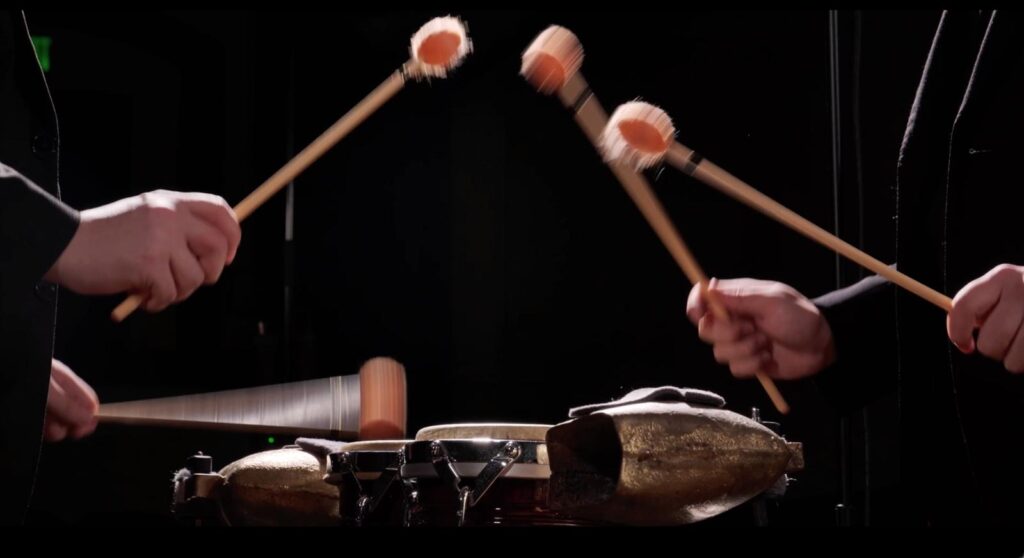A friend who is very religious asked me “why is your music chaotic? God loves harmony.” I said: God does not use a metronome. Can you use a metronome to understand the wind or the sea? Is it chaos? Or do we just have to listen with openness, without expecting a count, a beat? Can we pray to God by playing and dancing in that way?
In the series “Studies in Rhythmic Abstraction” I explore how far I can go experimenting with Latin American rhythmic patterns without loosing groove and dance qualities. As we get deeper into abstraction the rhythmic patterns start to resemble rhythms we find in nature: a cloud flowing, stones rolling in a river, or a tree in the wind. I wish we could dance to this music freeing our bodies from the bounds of a strict tempo.
Ritmo No. 1
I am inspired in cubism and op art. If you pick one of the instruments as a center, the piece changes, it is like looking at an object from different angles. Each one of the instruments generates a rhythmic center of its own through the use of the superposition of different time signatures.
Performers: Michael Liu, Karl Lee, Lena Shea and Xiaopeng Ma
Recording by Ben Giroux, at The Peabody Institute of the Johns Hopkins University. 2024.
3:4
I wrote this piece for Hypercube quartet. An abstraction of the 3:4 rhythmic relationship present in many Latin American music genres. Vibraphone, guitar and piano play loops. Each of them has its own metronome. The relationships between those metronomes are as follows is based on the 4 to 3 ratio: Vibraphone Left Hand (4) to Vibraphone right hand (3). Vibraphone Right hand (4) to Piano (3). Piano (4) to Guitar (3).
Performers: Erin Rogers (saxophone), Jay Sorce (electric guitar), Andrea Lodge (piano), Chris Graham (vibraphone). 2024.
Two Drums and Two Bells
A pattern in 7/8 inspired in Latin American rhythms such as Bembe or Festejo. Hits are added until all the sixteenth notes are played. Each one of the musicians is playing the same pattern, taking turns to add a new hit. They both have an independent metronome.
Performers: Michael Liu and Karl Lee.
Recorded at the Peabody Institute of John Hopkins University by Ben Giroux. 2024.
Cuerpo Después
I proposed Cuerpo Después to Andrea Tupac and Omar Lavalle as a project to explore Latin American social dance through experimentalism. To push the boundaries of what can be done in the gallery and the dance floor. The starting point was a 33 minute electronic music piece I made exploring abstractions of Latin American rhythms.
Cuerpo Después was a collective creation by Omar Lavalle (video), Efraín Rozas (music and dance), and Andrea Tupac (dance). Concept and direction by Efraín Rozas. Tech assistance by Esteban Coronel. Additional sound production by Felipe Salmón. 2024.
